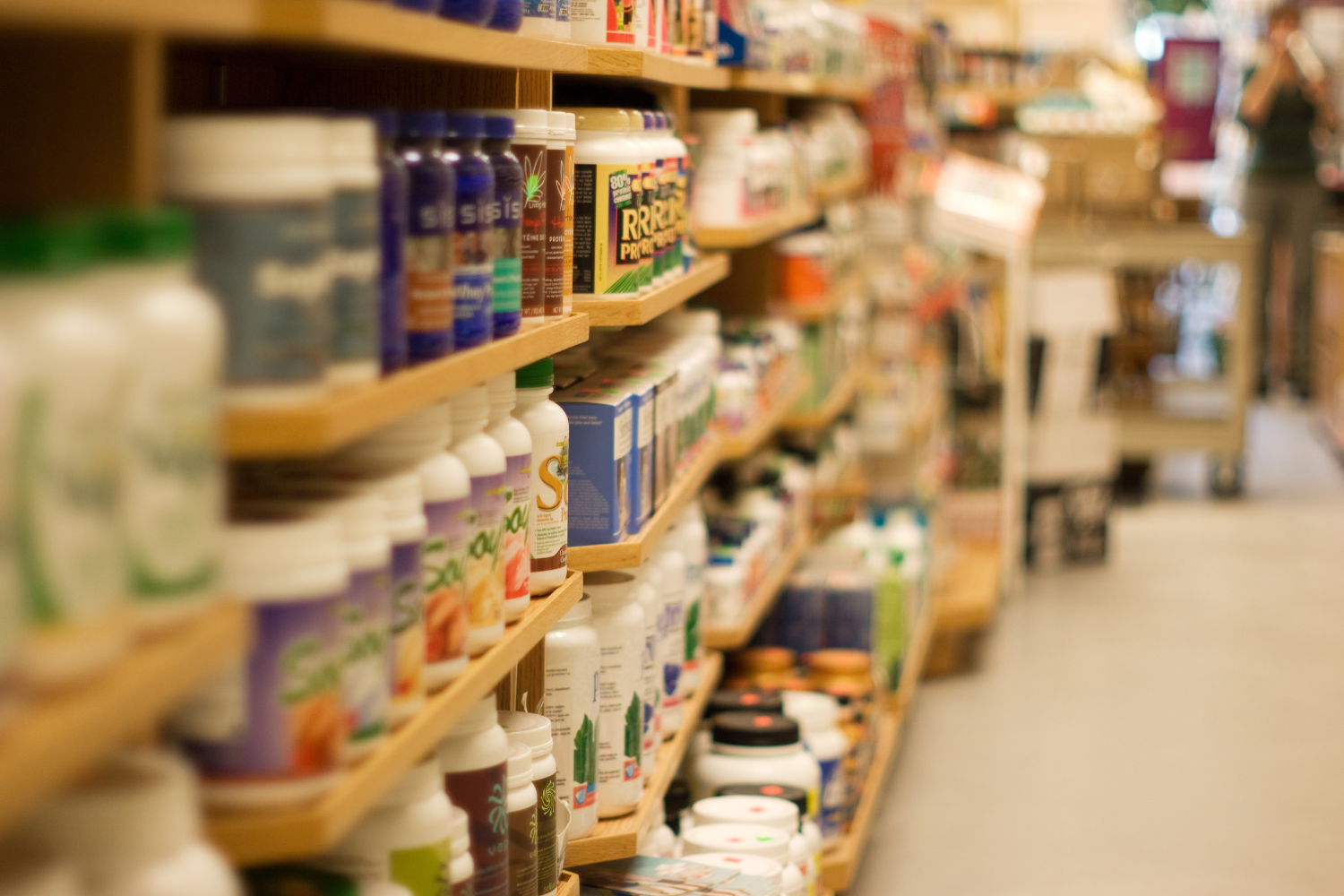As food allergies and dietary restrictions become more common, demand for allergen-free supplements is on the rise. Consumers, especially those managing allergies to common food allergens like gluten, dairy, nuts, and soy, seek safe options that align with their health needs. Formulating allergen-free and hypoallergenic products for supplement brands isn’t just a responsible choice—it’s a strategic one.
Catering to sensitive populations allows brands to reach a broader market, from children and individuals with food allergies to pregnant or nursing mothers, while building trust among health-conscious customers looking for safe, reliable supplements.

Table of Contents
ToggleWhat Does “Allergen-Free” Mean in Supplement Formulation?
In the supplement industry, “allergen-free” means a product is formulated without common food allergens to support individuals with food allergies or sensitivities. Similarly, “hypoallergenic” products are designed to reduce the risk of allergic reactions, even for people with specific sensitivities. Allergen-free supplements avoid ingredients like wheat, soy, dairy, and tree nuts, and are produced to help reduce cross-contamination risks for sensitive individuals.
In the U.S., FDA guidelines require labeling of major allergens if present, and brands must meet these regulations to maintain consumer trust. Meeting these regulations and accurately labeling allergen-free supplements help ensure consumer trust and compliance with health and safety laws.
Common Allergens to Avoid in Supplement Formulation
When creating allergen-free supplements, it is essential to avoid the “Big 9” allergens. These are the most common allergens, affecting millions of people and appearing in various foods and supplements.
- Milk – Often used in probiotics or flavoring.
- Eggs – May be present in certain protein powders or capsules.
- Fish – Used in omega-3 supplements.
- Shellfish – Common in some joint health products.
- Tree nuts – Sometimes used as oil bases or flavor enhancers.
- Peanuts – Found in powders or as fillers.
- Wheat – Present in some binding agents.
- Soy – A common additive and protein source.
- Sesame – Sometimes included in oils or as a flavor ingredient.

Cross-contamination can occur when allergen-free products are produced on equipment that has processed other allergen-containing products. Even trace amounts of allergens left on machinery can lead to unintended exposure, so allergen-free supplement manufacturers need rigorous cleaning practices to ensure product safety.
Hidden allergens can sometimes be found in supplement ingredients like gelatin, casein, or “natural flavors,” which may contain dairy, gluten, or other allergens. Reviewing ingredient labels thoroughly is essential for brands committed to offering genuinely allergen-free options.
Key Steps to Formulate Safe, Allergen-Free Supplements
Formulating safe, allergen-free supplements requires careful planning and strict quality control to avoid the inclusion of common food allergens. From ingredient sourcing to clear product labeling, each step plays a role in creating supplements that are genuinely safe for sensitive populations. Here’s how to approach the process effectively.
1. Source Ingredients Carefully
Using high-quality, pure ingredients is the foundation of allergen-free supplement formulation. Partnering with suppliers specializing in allergen-free materials and providing certificates of analysis (COAs) can help ensure that raw ingredients are free from contaminants like gluten, dairy, soy, or nuts. Verified sources add confidence in the product’s safety and make it easier to maintain high standards.
To avoid hidden allergens, it’s essential to screen each ingredient thoroughly. This means checking primary ingredients and reviewing all additives, excipients, and fillers for potential allergens. Identifying these elements early in the supply chain reduces the chance of allergens unintentionally entering the product.

2. Use a Certified Allergen-Free Manufacturing Facility
Manufacturing in a facility dedicated to allergen-free production significantly lowers the risk of cross-contamination. These facilities have strict protocols to ensure that allergens are not introduced during processing, which is especially important when producing supplements for those with severe food allergies or sensitivities.
Certifications such as NSF, GMP (Good Manufacturing Practices), and allergen-free certifications demonstrate that a facility meets stringent allergen standards and follows rigorous allergen control measures, giving consumers added confidence in the safety and quality of the final product.

3. Conduct Rigorous Testing for Allergen-Free Assurance
Routine testing is important for verifying that allergen-free claims remain accurate. Many brands rely on third-party laboratories to conduct these tests, as independent verification can confirm the absence of allergens like peanuts, tree nuts, or shellfish in the supplement.
Regular testing can help verify that each product run remains free of allergens. This frequent testing is crucial for sensitive populations, including children and individuals with severe food allergies, as it demonstrates a commitment to safety and helps brands maintain product integrity over time.

4. Label and Market Products Clearly
Transparent labeling is critical when marketing allergen-free supplements. Including “free from” statements for each Big 9 allergen, such as dairy, eggs, and wheat, allows consumers to identify which products meet their dietary needs quickly. Clear labeling builds trust and helps consumers make informed choices.
To avoid misleading claims, brands should use terms like “hypoallergenic” carefully. Misleading or overstated claims may confuse consumers and risk non-compliance with regulatory guidelines. Instead, brands should clearly outline which allergens are excluded and include a warning to consult a healthcare professional if needed.
Special Considerations When Formulating Supplements for Sensitive Populations
Formulating supplements for sensitive populations involves more than avoiding allergens; it includes addressing additional dietary needs and ensuring product safety through careful ingredient selection.
1. Addressing Dietary Restrictions Beyond Allergens
Beyond allergens, many consumers seek supplements that meet specific dietary standards, such as gluten-free, vegan, or kosher. Including these certifications on product labels can help brands appeal to consumers with multiple dietary needs.
- Gluten-Free Certification: Ensures the product is safe for those with gluten sensitivities or celiac disease.
- Vegan Certification: Indicates no animal products are used, supporting ethical and dietary preferences.
- Kosher Certification: Complies with kosher standards, broadening the appeal to consumers following kosher diets.
Sourcing certified vegan, gluten-free, or kosher ingredients can help brands address diverse dietary needs. Using certified ingredients assures consumers who depend on strict dietary guidelines.
2. Common Additives to Avoid in Allergen-Free Formulas
Formulating for sensitive populations requires minimizing dyes, artificial flavors, and preservatives. Many consumers seeking allergen-free supplements also prefer cleaner formulas without synthetic additives that could cause discomfort or adverse reactions.
Some synthetic preservatives and artificial additives may act as irritants, particularly in sensitive populations. Even if these ingredients aren’t allergens, avoiding them can make a product more accessible to people with dietary restrictions or sensitivities, enhancing the formula’s appeal.
3. Educating Consumers on Allergen-Free and Hypoallergenic Claims
Helping consumers understand “allergen-free” labels can be as simple as including educational materials on the brand’s website or packaging. Information on allergen-free standards helps consumers make informed choices and gives insight into the measures taken to ensure product safety.
Brands that are transparent about their ingredient sourcing and manufacturing processes can build consumer trust. Sharing testing details and explaining how ingredients are sourced provides reassurance and can strengthen the connection with health-conscious buyers.
Benefits of Offering Allergen-Free Supplements for Health and Wellness Brands
For wellness brands, providing allergen-free supplements can drive growth and build a reputation for reliability and transparency in the marketplace.
Expanding Market Reach and Attracting Loyal Customers
Catering to niche markets, including parents of children with food allergies, individuals with strict dietary needs, and allergy sufferers, allows brands to attract a broader customer base. These consumers are often looking for safe, high-quality supplements they can trust.
Offering allergen-free products can also inspire loyalty among consumers who prioritize brands committed to allergen awareness, making them more likely to stick with brands that offer consistent, reliable, allergen-free options.

Aligning with Health Trends and Building Trust
Today’s consumers value transparency around allergens and ingredient sourcing. Brands that provide clear allergen information and labeling align with these consumer preferences and show respect for individual health needs.
Offering allergen-free formulations may align a brand with consumer preferences in the wellness space. By prioritizing allergen-free options, brands demonstrate a commitment to high standards, reinforcing their reputation in a competitive industry and strengthening relationships with health-conscious consumers.
Frequently Asked Questions
What certifications are available for allergen-free supplements?
Certifications like NSF for Gluten-Free and other allergen-specific certifications offer consumers added reassurance.
Can small brands afford allergen-free manufacturing?
Small brands can manage costs by partnering with contract manufacturers that specialize in allergen-free production or using shared allergen-free facilities.
How can I ensure my product remains allergen-free through distribution?
Work with logistics providers who offer allergen-free handling and storage to maintain product safety during distribution.
What ingredients should I avoid to make a supplement hypoallergenic?
To create hypoallergenic supplements, avoid common irritants like lactose, soy, artificial colors, and synthetic preservatives.
What is the best way to label allergen-free supplements?
Use clear “free from” labeling for the Big 9 allergens and include any additional certifications to help consumers easily identify safe options.
Start Formulating Safe, Allergen-Free Supplements Today
Creating allergen-free supplements offers brands a unique opportunity to serve sensitive populations and build trust with health-conscious consumers. So brands can enhance their credibility and expand their market reach by sourcing safe ingredients, using dedicated allergen-free manufacturing, and labeling transparently. If you’re ready to formulate safe, allergen-free products, consider consulting a supplement formulation expert or reaching out to a certified allergen-free facility to begin development.
References
- Centers for Disease Control and Prevention. (2020). Food Allergies in Schools Toolkit. Retrieved from https://www.cdc.gov/healthyschools/foodallergies/toolkit.htm
- National Institutes of Health. (2024). Food Allergy | NIAID. Retrieved from https://www.niaid.nih.gov/diseases-conditions/food-allergy
- U.S. Department of Agriculture. (2024). Food Allergies: The “Big 9”. Retrieved from https://www.fsis.usda.gov/food-safety/safe-food-handling-and-preparation/food-safety-basics/food-allergies-big-9
- U.S. Food and Drug Administration. (2005). Dietary Supplement Labeling Guide. Retrieved from https://www.fda.gov/food/dietary-supplements-guidance-documents-regulatory-information/dietary-supplement-labeling-guide
- U.S. Food and Drug Administration. (2024). Food Allergies: What You Need to Know. Retrieved from https://www.fda.gov/food/buy-store-serve-safe-food/food-allergies-what-you-need-know
- U.S. Food and Drug Administration. (2022). Food Allergen Labeling and Consumer Protection Act of 2004 (FALCPA). Retrieved from https://www.fda.gov/food/food-allergensgluten-free-guidance-documents-regulatory-information/food-allergen-labeling-and-consumer-protection-act-2004-falcpa




